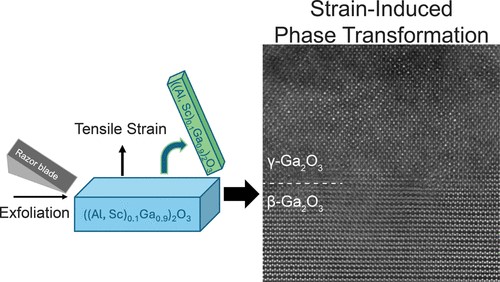
【Others Papers】Determination of the β to γ Phase Transformation Mechanism in Sc- and Al-Alloyed β-Ga₂O₃ Crystals
日期:2024-12-05阅读:568
Researchers from The Pennsylvania State University have published a dissertation titled "Determination of the β to γ Phase Transformation Mechanism in Sc- and Al-Alloyed β-Ga2O3 Crystals" in ACS Applied Electronic Materials.

Abstract
β-Ga2O3 is a promising ultrawide bandgap semiconductor for next-generation power electronics, but the unintended formation of γ-Ga2O3 in β-Ga2O3 crystals has been observed in a variety of situations. Such defective inclusions, resulting from growth kinetics or ion-induced damage, can degrade the material performance and alter the local electronic structure. Previous studies have only examined the presence of γ-Ga2O3 in β-Ga2O3 thin-film structures. In this work, we observe the ubiquitous formation of a thin γ-Ga2O3 layer on the surface of mechanically exfoliated melt grown Al- and Sc-alloyed β-Ga2O3 single crystals and characterize the atomic scale structure across the interface using scanning transmission electron microscopy. Direct imaging paired with electron diffraction confirms γ-Ga2O3 formation, and orientation relationships are determined across the interface. Electron energy loss spectroscopy identifies the O K-edge spectral fingerprint of γ-Ga2O3, while many-body perturbation theory on top of density functional theory explains the shift of the spectral intensity between β- and γ-Ga2O3 as an interplay of excitonic and electronic effects. Further first-principles studies evaluate the role of strain on phase stability and identify that at an 8.5% tensile strain, γ-Ga2O3 becomes energetically favored over β-Ga2O3. Stabilization of the β phase of Ga2O3 under compressive stress is further confirmed through electron diffraction studies of the regions surrounding Vickers indentations. Phase stability is also observed to be independent of the alloying element. These findings confirm the capability for γ-Ga2O3 to occur under extreme environments while also providing evidence that strain is the underlying driving force causing the phase transformation.
DOI:
https://doi.org/10.1021/acsaelm.4c00762


